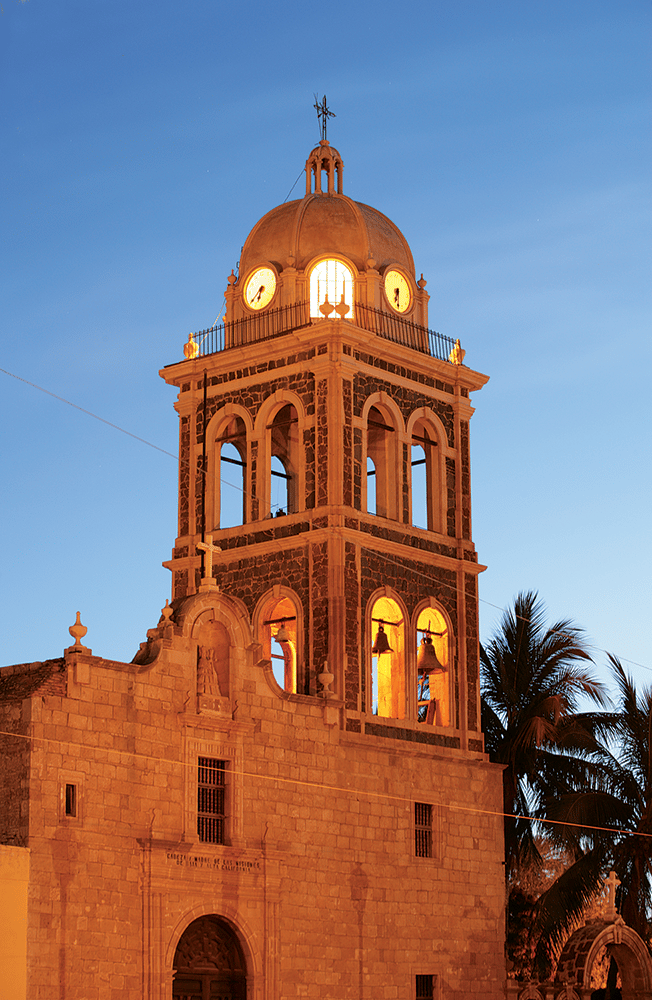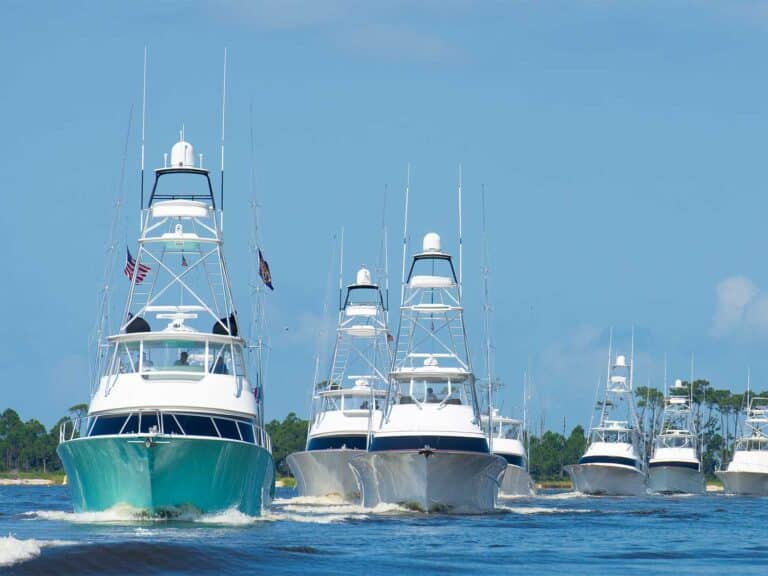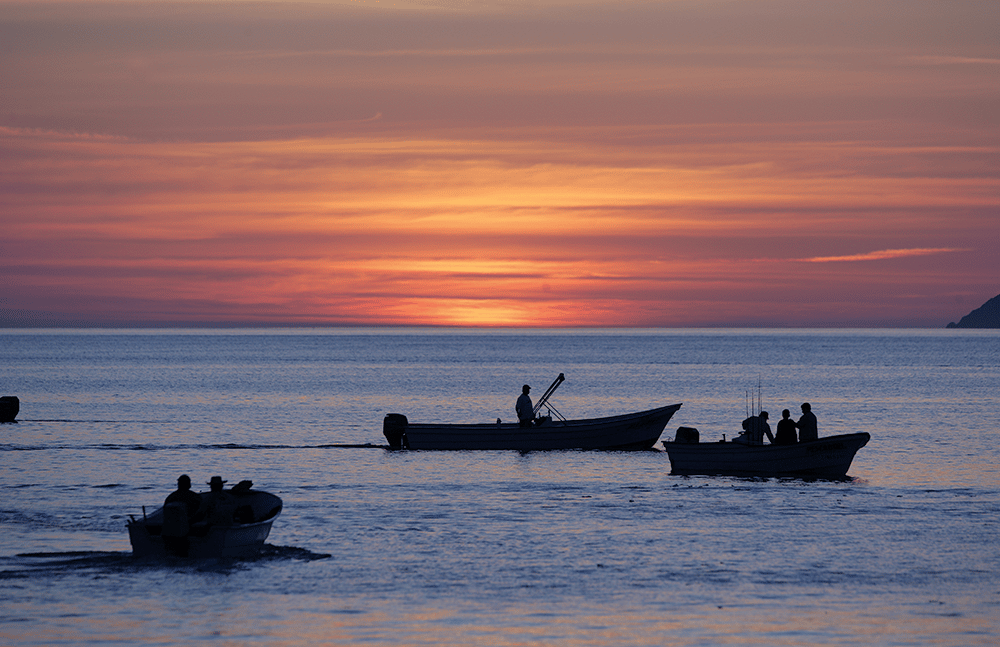
It’s a hot summer’s day, and with a tournament in progress, dozens of teams scattered throughout the Sea of Cortez are bitching about the same things: There are too many sailfish, and there is not enough bait.
Why would anglers complain about the annoying amount of sailfish during a tournament? Because this is the Fishin’ for the Mission Dorado Tournament! Unfortunately, the sails turned out in such numbers that they were literally pushing dorado off the baits. Where in the world, let alone the Sea of Cortez, do you find sailfish so concentrated that they have become a nuisance? The answer is the historic, sleepy town of Loreto, Baja Sur.
I’ve fished out of Loreto several times now, and I can say from experience that sailfish aren’t the only members of the billfish population that come through the area. From June through October, striped marlin, blue marlin and even an occasional black marlin can make any day’s fishing that much more memorable.
Why hasn’t the rest of the world discovered Loreto before this? For one, the bulk of the fishing effort comes from local pangas that don’t typically target larger billfish. The same goes for many of the vacationing gringos who are most likely looking for dorado, yellowfin tuna and the occasional wahoo. But the other reason Loreto has never really made headlines is that the ones who discovered this billfish paradise try to keep it to themselves!
The hurricane season starts blooming in the southern regions of Baja in July, so insurance-coverage issues prompt a few smart owners of larger sport-fishing vessels to move to the hurricane-safe zone of the Sea of Cortez, north of the 26-degree north latitude line — a line of demarcation for hurricanes in this part of the world. After making this precautionary move up in the Sea of Cortez, these boats start catching plenty of billfish using the same methods and techniques that were working for them farther south.
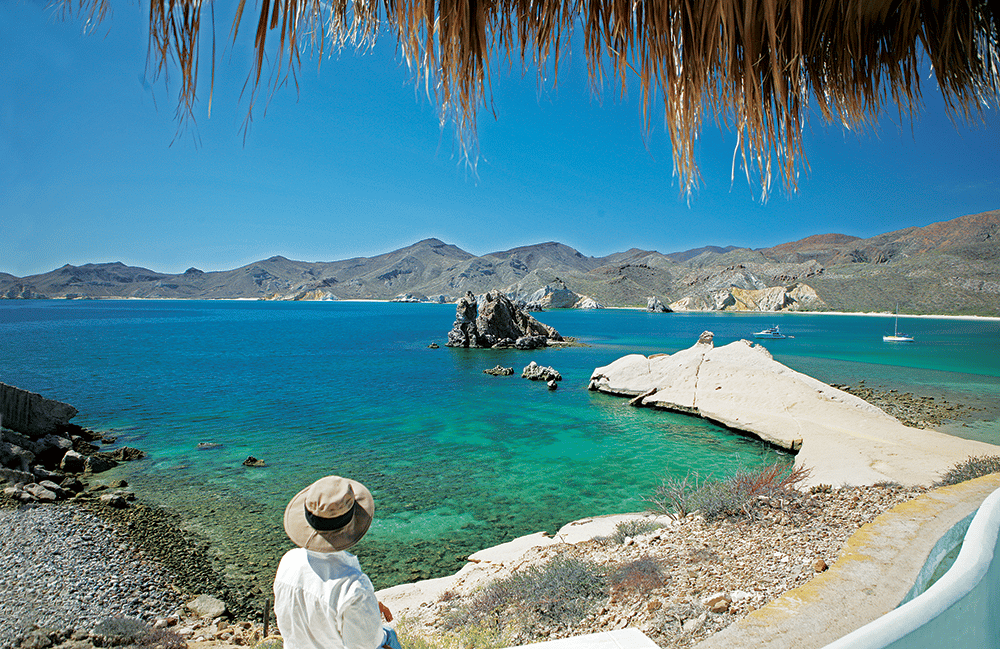
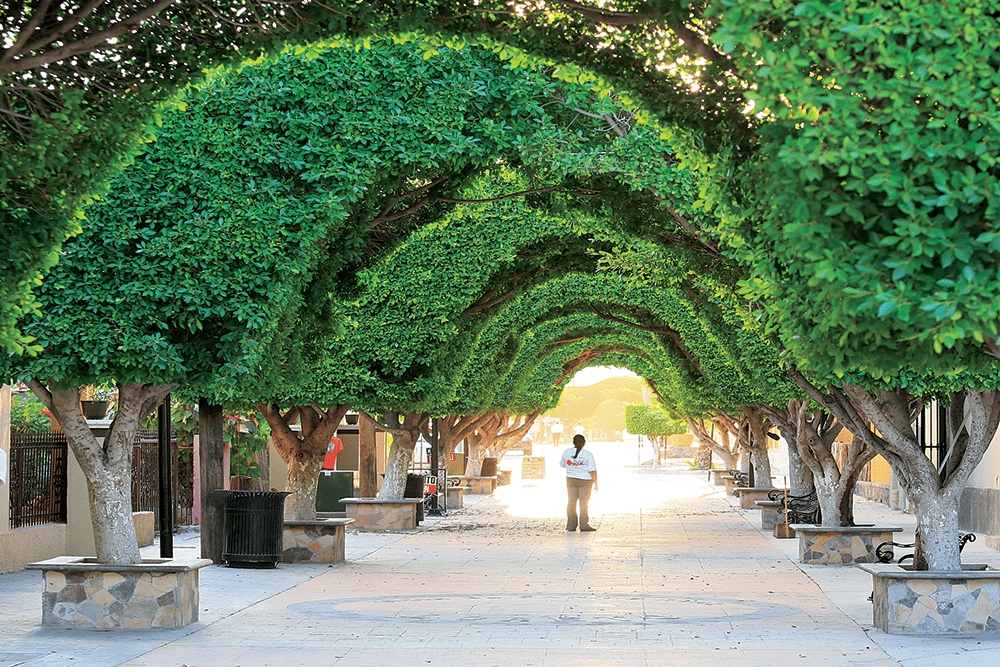
Stripes, Too
Striped marlin prefer slightly cooler waters and can be found around Loreto from late May through July, then again from September to early November. These are the times the local waters hit that striped marlin comfort zone of 68 to 76 degrees.
Typically, ample supplies of live mackerel, green jacks or big sardines are available for sale from local fishermen. You can usually purchase bait at the entrance to the Loreto harbor for a buck or two per bait. For those who prefer to catch their own, many anglers simply choose to try the waters within a mile from the harbor or out near Coronado Island to the east. With such a wide variety of species to target and the good numbers you can run across of each, you want 20 or more baits on board before heading out.
Will these fish eat lures? Of course. The local favorites include Zuker 3.5 and 5.5 flat heads, Sevenstrand Kona Clones, Hi-5 and Mold Craft Wide Ranges in the 9.5- and 12-inch sizes. Favorite colors that anglers here reach for most often include purple/black, green/black, blue/white, red/yellow, petrolero, zucchini, and Mexican flag. A good overall trolling speed that gets you lots of bites from both marlin and sails is about 7 knots.
Most seasoned striped marlin anglers keep a few “marlin-baiter” rods on standby for occasions when a stripey is seen feeding, sleeping, tailing or finning on the surface. A striped marlin on the surface represents your best opportunity to present a live bait. So, aside from keeping its eyes astern -— “keeping the lures honest” — a proficient striped marlin crew is constantly surveying the horizons for the chance of lobbing a mackerel at a finning fish.
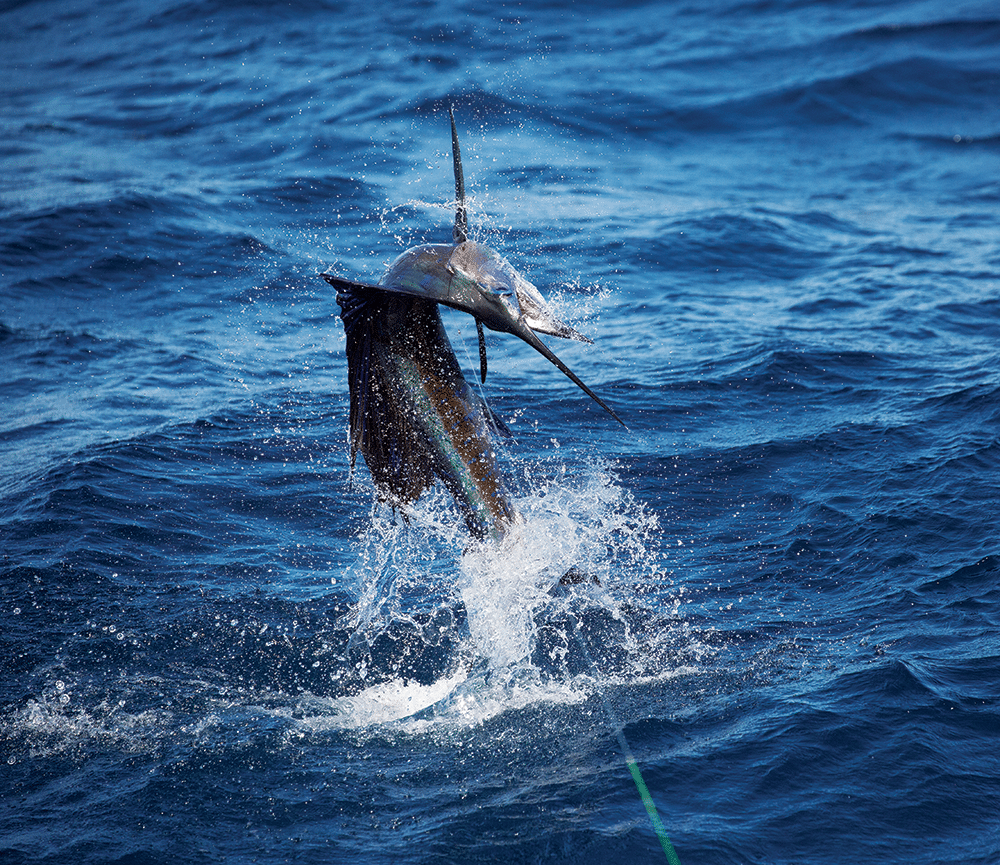
Sailfish By the Number
To give you an example of the numbers I am talking here, in one day during the Fishin’ for the Mission tournament, we raised over 70 sailfish in a 22-foot panga with a 90-hp Honda outboard. We ran only two lines to minimize bait loss to the sails, and we still were getting covered up. It was like nothing I have ever seen in Guatemala, Costa Rica or Panama, and I have had the pleasure of seeing all these locations at their very best.
During one trip, we came upon a bunch of booby birds sitting on the surface with their heads dipping below for a peek. With all of that head dipping going on, I wanted to take a look for myself. I asked the panga captain to get well upwind and shut the motor off. I free-dived into the most amazing scene I could ever imagine: dozens of dorado balling large sardines, with three circling sailfish adding to the mix. Birds swam down past me, grabbed sardines and brought them back up to the surface. It was absolutely surreal, and the bait didn’t stand a chance from the predation that came from both above and below.
Adjusting to the situation at hand, most tournament anglers maximize their bait supply by switching to trolling hook-less teasers, drawing in the larger bull dorado then dropping their baits back in hopes of a hookup that would guarantee the jackpot.
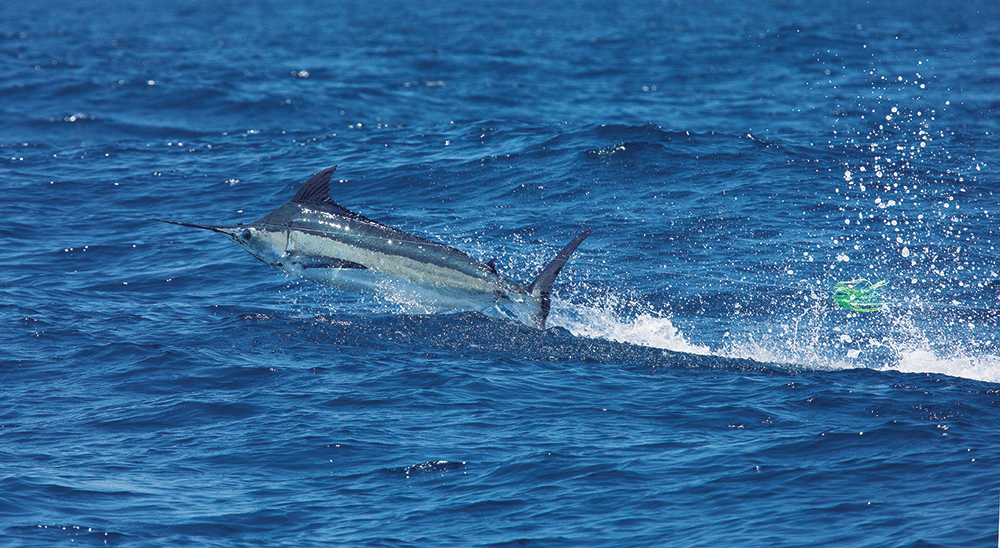

Blue and Black Marlin
When the summer heat kicks in, the water surface temperatures in Loreto can rocket up from 76 to 84 degrees in short order. This is when yellowfin tuna, oceanic skipjack and black skipjack schools arrive in such numbers that they are measured in tonnage. You typically find yellow fin following porpoises, while skipjacks tend to congregate in giant schools. Wherever they are found, what really matters is that these tunas represent the most important food source of the blue marlin and black marlin that move into the area during July. They don’t stay long, however; by late September, early October, these tunas and marlin are, once again, trekking south to Baja’s tip.
Anglers here put in only a negligible amount of effort to pursue blue and black marlin. Rarely do you see local anglers or day charters fishing for large marlin here because the dorado fishery is so good.
If you want to seriously target blues and blacks off Loreto, an ideal setup starts with a boat that has at least four tuna tubes and a good set of outriggers. You could drag a pattern of two chuggers off the flats, some plunger and/or cupped-faced lures out of the riggers, and a Ilander/mackerel bait on the shotgun. I prefer to have a few tunas in the tubes for a bait-and-switch, then set a course for the current breaks and weed lines that start out past Isla del Carmen, working south from there.
You usually see a lot of bird life in the Loreto area: Astute anglers will keep their eyes peeled for frigate birds working high, with Heermann’s gulls and booby birds working low. The sight of small white terns fluttering and dipping usually pinpoints the presence of a baitball and should never be overlooked.
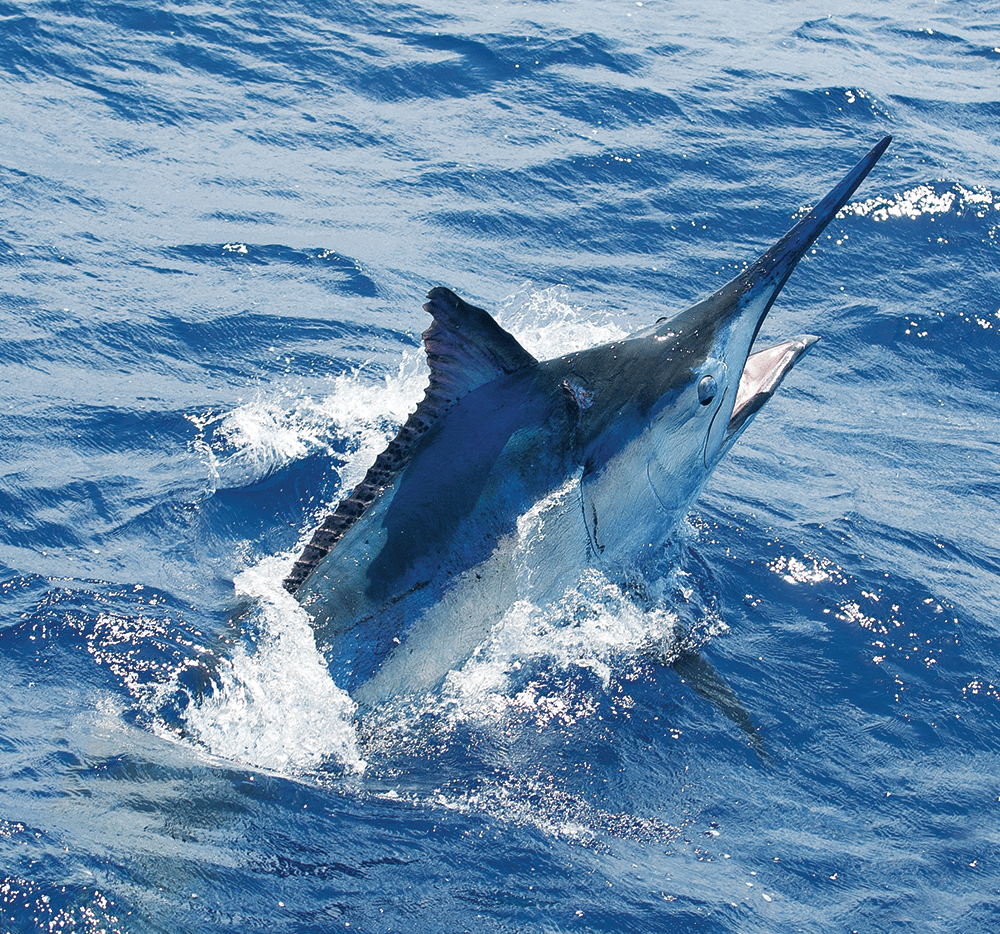
Dorado
The true staple of the offshore effort in Loreto, dolphin here range from schoolies of 4 to 8 pounds, to some enormous individuals that commonly push the 50-pound mark. Arriving in late May and staying till early November, dorado frequent Loreto’s waters and range from close along the rocky shorelines to out to 40 miles. Most of the panga fleet stays on the fish because it is their livelihood. Live baits can make or break a great day, but most dorado are not that picky and will eat feathers, small lures and trolled plugs, like the Halco Giant Trembler and Laser Pro 160 and 190s.
If Humboldt squid are being caught locally, it’s worth your while to fish a few up on the squid jigs or purchase a few from the bait pangas when they have them. Most of you know what an effect a trolled/cast squid strip will do to the appetite of a dorado and, once one is hooked, the frenzy a chum line of squid chunks can create.
Sargasso weed lines do form, and they often appear in huge mats in the summer months as a result of the dynamic currents and eddies in the Sea of Cortez producing huge streaks of this algal debris. Any East Coast anglers who come across this will instinctively know what to do to have a banner day on dorado.
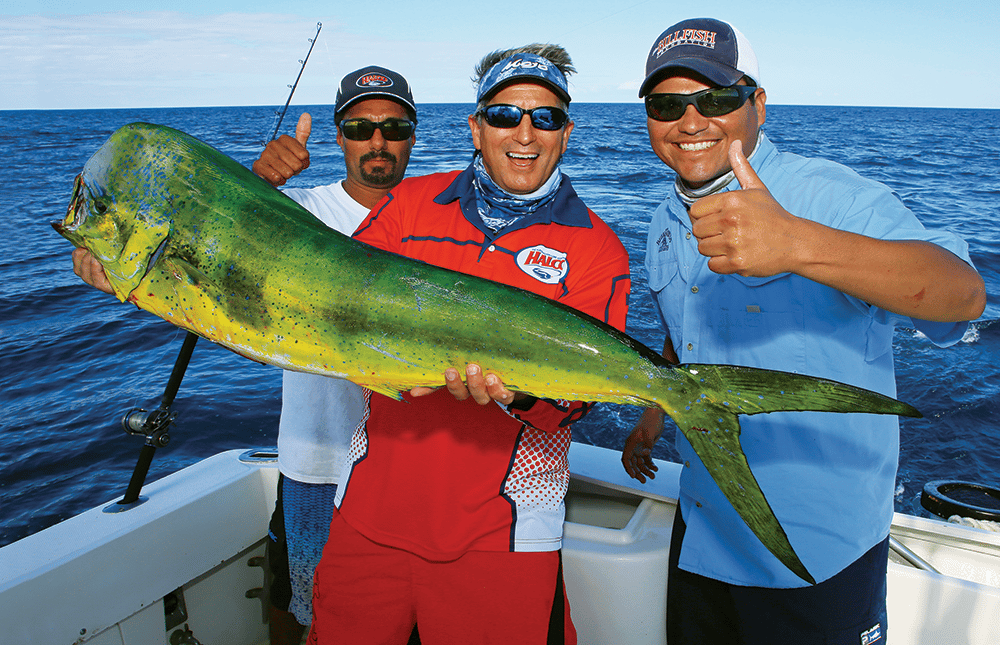
Wahoo
Wahoo is an incidental catch for most of the summer on the marlin grounds, but you can catch them up to 70 pounds here. They show up in more consistent numbers the farther you head to the south, in the areas just north of Isla Montserrat and Isla Santa Catalina. In these waters, the whole ocean can explode with any pelagic favorites, but local anglers with wahoo in mind pick up the trolling pace to 10 knots and throw out some Halco Giant Tremblers, metal-headed jets and spinning-headed wahoo bombs.
Weather
The main beauty of fishing the Loreto area of the Sea of Cortez comes from the typically calm seas you enjoy offshore. Should the wind come up and hinder your plans, many large islands offer great lees and plenty of fishable areas to salvage a day. The strongest winds blow most predominantly from the north, from November through March. To the billfish angler, these winds don’t pose a threat because you are already back in Cabo fishing striped marlin.
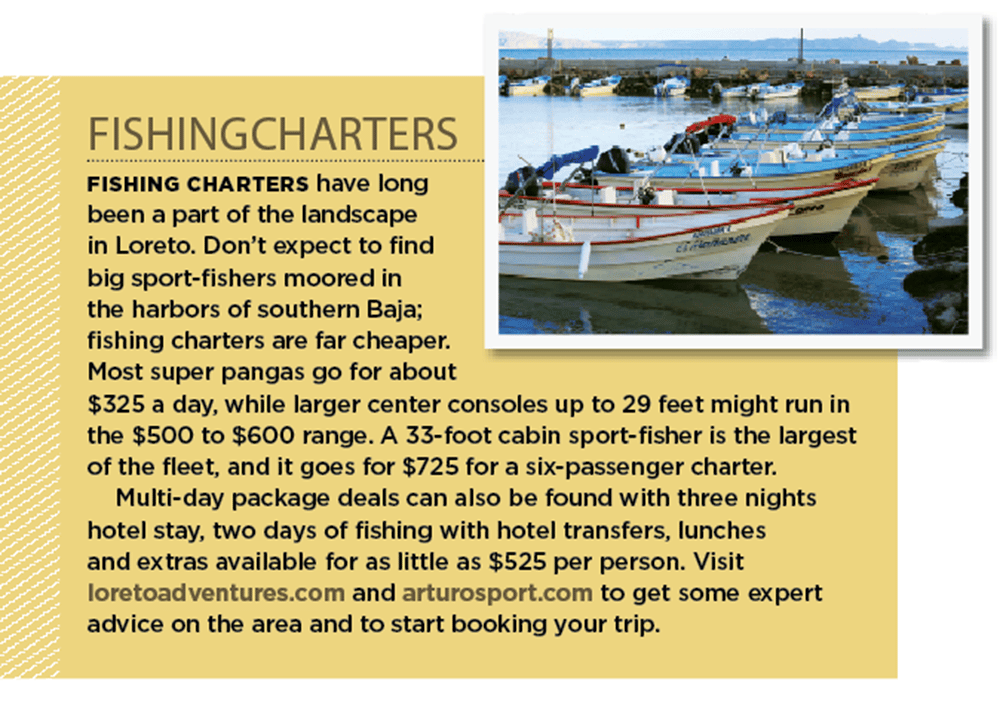
Why Loreto?
Loreto comes with the small town charm and laid-back atmosphere that used to be readily available from La Paz to Cabo. In direct contrast to the new popular tourist destinations that have sprung up all over Baja, Loreto and the surrounding area is rife with history, including the oldest mission in all of Baja California. Considered the mother of all the missions in Baja, the Mission of our Lady of Loreto was the starting point of the Jesuit monks who went out to evangelize the new American territory. Founded in 1697, the mission sparked the first settlement of Spanish origin in the region. It’s very well preserved and still functions today as it has for the last 315 years.
Many fine restaurants and little drinking establishments dot the walkways that lead away from the mission. So now that you know about the year-round fishing potential, the underfished billfish bonanza and the quaint Mexican town with class and charm, you need to stop asking “Why Loreto?” and start asking “Why not?”
